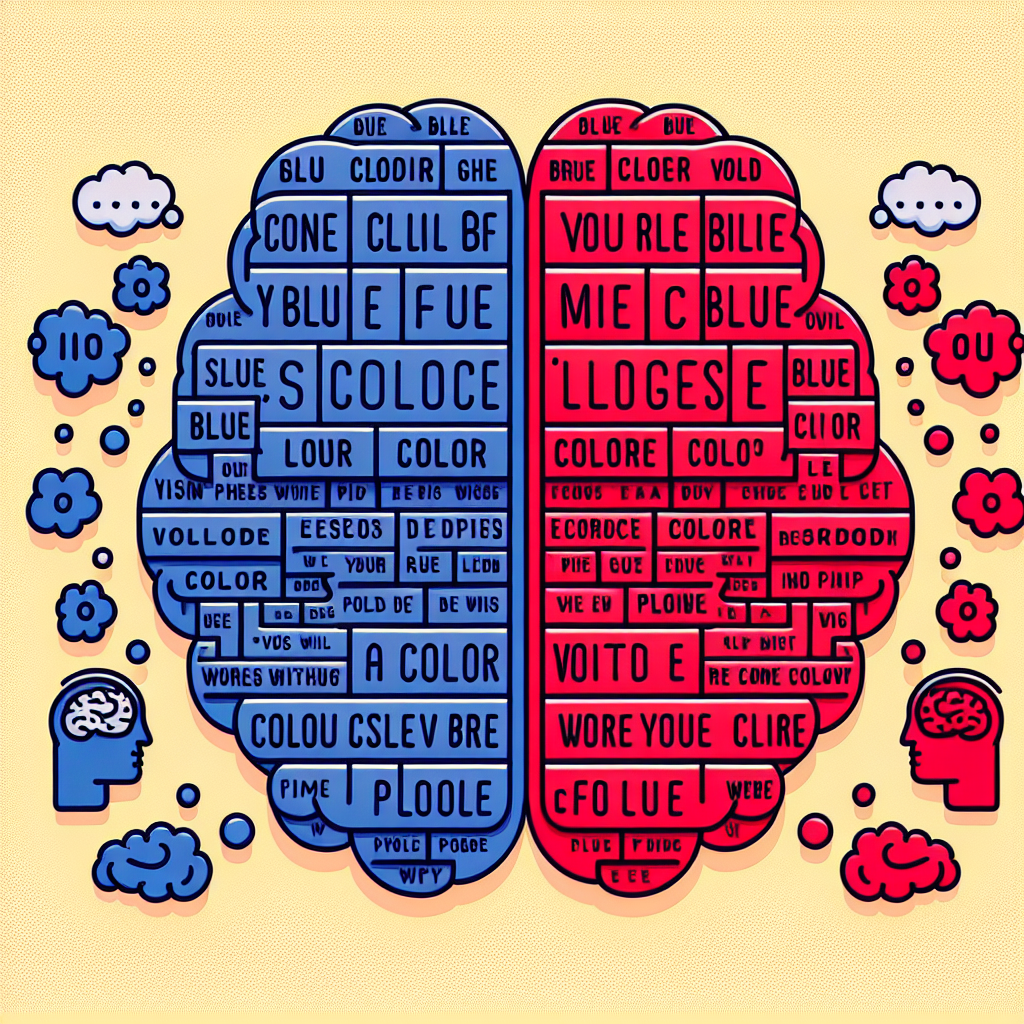
Introduction
Imagine you’re taking a casual stroll through a colorful garden. Suddenly, you’re presented with a peculiar sign that reads “RED” written in vibrant green letters. At that moment, your brain faces a fascinating challenge. Do you read the word, or do you identify the color? This situation exemplifies what psychologists call The Stroop Effect. Understanding this cognitive phenomenon is not just an academic endeavor—it’s essential for anyone curious about how our brains process conflicting information. As we delve into The Stroop Effect Explained: Why Your Brain Struggles with Color and Words, we’ll explore its implications, significance in everyday life, and ways to harness this understanding for personal and professional growth.
The Origins of the Stroop Effect
Historical Context
The Stroop Effect was first described by John Ridley Stroop in 1935 as part of his doctoral dissertation. His pioneering research revealed a peculiar effect: participants took longer to name the color of the ink than to read the word itself when colors and words conflicted. This finding has undergone rigorous examination and has applications across various domains, from cognitive psychology to education and even marketing.
The Cognitive Process
The underlying mechanism of The Stroop Effect hinges on our brain’s processing speed and how we prioritize certain types of information. In the case of color words, reading is an automatic process, while color recognition requires more cognitive effort. This discrepancy leads to a delay in reaction times when conflicting signals are presented.
The Science Behind the Stroop Effect
Neurological Insights
Neuroscientific studies using fMRI and EEG have illuminated how the brain tackles such conflicts. When faced with tasks that involve both reading and color recognition, distinct brain regions become activated. The anterior cingulate cortex (ACC) plays a pivotal role by monitoring conflicting information and signaling the need for cognitive control. Understanding these processes provides insight into the intricate workings of our minds.
Theories Explaining the Effect
- Automaticity Theory: Suggests that reading is an automatic process, while color identification requires additional cognitive resources.
- Cognitive Control Theory: Proposes that the brain can exert control over one process (color identification) to suppress another (word reading), but this control is limited and influenced by context.
Real-World Applications of the Stroop Effect
In Education
Educators can leverage The Stroop Effect to design exercises that improve students’ cognitive flexibility. For instance, introducing activities where students must alternate between tasks can enhance their ability to switch gears efficiently. This technique can prove invaluable in subjects that require multitasking or quick problem-solving.
Case Study 1: Classroom Experiment
A study involving elementary school students asked participants to complete Stroop tasks before and after a series of cognitive training sessions. Results showed a significant improvement in task completion times among students who practiced cognitive flexibility techniques.
Analysis: This case illustrates the potential of applying The Stroop Effect in educational settings to boost focus and adaptability among learners.
In Mental Health
The Stroop Effect has also found application in psychological assessments, particularly in measuring executive functions in individuals with anxiety or depression. Difficulty in managing cognitive conflicts can indicate underlying mental health issues.
Case Study 2: Assessing Anxiety
A group of individuals diagnosed with anxiety disorders demonstrated longer response times in Stroop tasks, highlighting their struggle with cognitive control.
Analysis: This study emphasizes how The Stroop Effect can serve as a diagnostic tool for mental health professionals to gauge cognitive functions related to mood disorders.
In Marketing and Consumer Behavior
Marketers can utilize principles from The Stroop Effect to design advertisements that capture attention through color-word conflicts. By overriding the brain’s automatic response, advertisers can create more memorable messages that resonate with consumers.
Case Study 3: Advertisement Impact
In a study focusing on ad effectiveness, researchers found that ads utilizing color-word discrepancies elicited higher engagement and recall rates among viewers.
Analysis: This finding underscores the practicality of The Stroop Effect in crafting marketing strategies that leverage cognitive processes to boost consumer engagement.
Cognitive Enhancements and Personal Growth
Mindfulness Techniques
Practicing mindfulness can enhance cognitive control, making it easier to manage conflicting information. Techniques such as meditation train the brain to focus and reduce reaction times when faced with distractions.
Daily Applications
Incorporating exercises based on The Stroop Effect into daily routines can improve mental agility. For example, engaging in word-color games can sharpen cognitive skills, enabling an individual to handle multitasking scenarios with ease.
Resources for Further Learning
- Books: Titles such as "Thinking, Fast and Slow" by Daniel Kahneman and "The Power of Habit" by Charles Duhigg provide deeper insights into cognitive processes.
- Online Workshops: Educational platforms offering courses on cognitive psychology and personal development can further enhance understanding.
Conclusion
Understanding The Stroop Effect Explained: Why Your Brain Struggles with Color and Words opens up a realm of opportunities for personal and professional growth. By recognizing how our brains process conflicting information, we can improve our cognitive flexibility, apply these principles in various fields, and cultivate mindfulness to enhance our everyday mental performance.
Whether you’re an educator, a mental health professional, or simply someone looking to sharpen their cognitive skills, embracing the knowledge of the Stroop Effect can yield substantial benefits. So let’s continue this journey of discovery and embrace the complexities of our minds.
FAQs
1. What is the Stroop Effect?
The Stroop Effect describes the delay in reaction time when identifying a color used in a word that names a different color (e.g., the word "RED" printed in blue ink).
2. How can I use the Stroop Effect in my daily life?
You can practice tasks that involve conflicting information, such as word-color games or exercises designed to enhance cognitive flexibility.
3. Why does anxiety affect performance in Stroop tasks?
Individuals with anxiety may have diminished cognitive control, leading to longer response times when faced with conflicting information.
4. Can the Stroop Effect be measured?
Yes, cognitive psychologists measure the Stroop Effect through various experimental tasks that assess reaction times and accuracy.
5. How does the Stroop Effect relate to multitasking?
The Stroop Effect highlights the limitations of cognitive control, which becomes particularly salient in multitasking situations where conflicting signals need to be managed efficiently.
By understanding the nuances of The Stroop Effect, you can unlock your brain’s potential and navigate the complexities of information processing with greater ease.

















